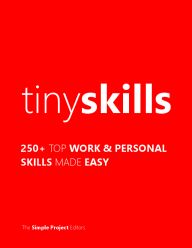On February 16, 2025 By newsroom Topic: Technology Buyers Guide
Tablets are versatile devices, perfect for streaming, reading, creating art, or even photo and video editing. Here’s how to choose the right one based on your needs and budget.
Is Portability a Priority?
- Small Tablets (8 inches or less): Lightweight, under 1 pound, and great for travel.
- Large Tablets: Better for video streaming, productivity, and art but less portable.
What’s Your Budget?
- Under $200:
- Amazon Fire tablets dominate this range, ideal for reading, streaming, and casual use.
- Limited selection of Android tablets but lower performance.
- $330 and Up:
- Entry-level Apple iPad or mid-tier Android tablets with solid performance.
- $500–$1,000:
- High-performance tablets with better displays, faster processors, and premium features.
- Above $1,000:
- Pro-level tablets (e.g., iPad Pro, Samsung Galaxy Tab S9) for demanding tasks like editing and design.
What Are Your Specific Needs?
- Screen Size: Larger screens for movies and art, smaller for travel.
- Battery Life: Most models offer 10+ hours; some, like Amazon’s Fire Max 11, last nearly 20 hours.
- Storage:
- 32GB–64GB: Sufficient for casual use.
- 128GB+: Recommended for media-heavy users.
- Apple tablets can offer up to 2TB of storage.
- Accessories: Check compatibility for keyboards and styluses (e.g., Apple Pencil).
Is It for Kids?
- Look for parental controls, kid-friendly content, and rugged designs.
- Tablets like Amazon Fire Kids include profiles for age-appropriate usage and content.
Operating System
- Apple iPadOS: Best app ecosystem, optimized for multitasking and creative work.
- Android: Versatile and customizable, good range of price points.
- Amazon Fire OS: Affordable but limited app options via Amazon Appstore.
Connectivity
- WiFi-Only Models: Cost less and sufficient for most users.
- Cellular Models: Ideal for frequent travelers but add to monthly phone bills.
Screen Aspect Ratio
- Square Screens (e.g., iPads): Better for multitasking and mixed use.
- Rectangular Screens (16:9): Great for watching videos and movies.
Ports and Peripherals
- Look for USB-C for better compatibility with modern accessories.
- USB-A adapters might be needed for older devices.
Printing Capability
- Most tablets support wireless printing via apps or share sheets.
Case or Screen Protector
- Necessary: If kids or travel are involved.
- Optional: For homebound use.
Apple iPad
- Pros: Superior app ecosystem, reliable performance, and premium design.
- Models: From entry-level iPads ($330+) to high-end iPad Pros ($1,000+).
Amazon Fire
- Pros: Budget-friendly, kid-friendly models, and access to Amazon Prime content.
- Cons: Limited app ecosystem compared to iPadOS or Android.
Samsung Galaxy Tab
- Pros: Great for Android enthusiasts; S Pen support for creative tasks.
- Cons: Pricey premium models.
Microsoft Surface Go/Pro
- Pros: Excellent for productivity; runs Windows OS for full desktop experience.
- Cons: Higher cost for accessories like keyboards.
Consider App Availability:
- Apple’s App Store has exclusive, high-quality apps not found on Android or Fire OS.
- Fire OS lacks popular apps like Google Drive or Gmail.
Check Sales:
- Amazon Fire tablets frequently go on sale.
- Apple’s refurbished store offers deals on older iPads.
WiFi vs. Cellular:
- Stick to WiFi unless you’re constantly on the go without hotspots.
Don’t Overspend on Accessories:
- Make sure accessories like keyboards and styluses are compatible with your tablet.
Two-year warranty for free replacements if damaged.
Battery Life: Opt for models lasting 7–9 hours for long trips.
A tablet can transform how you work, learn, and relax. Whether you need a device for productivity, entertainment, or kid-friendly use, choose a tablet that matches your lifestyle and budget!

